The “Flyby” UFO Footage: And Why It Refuses to Fade Away
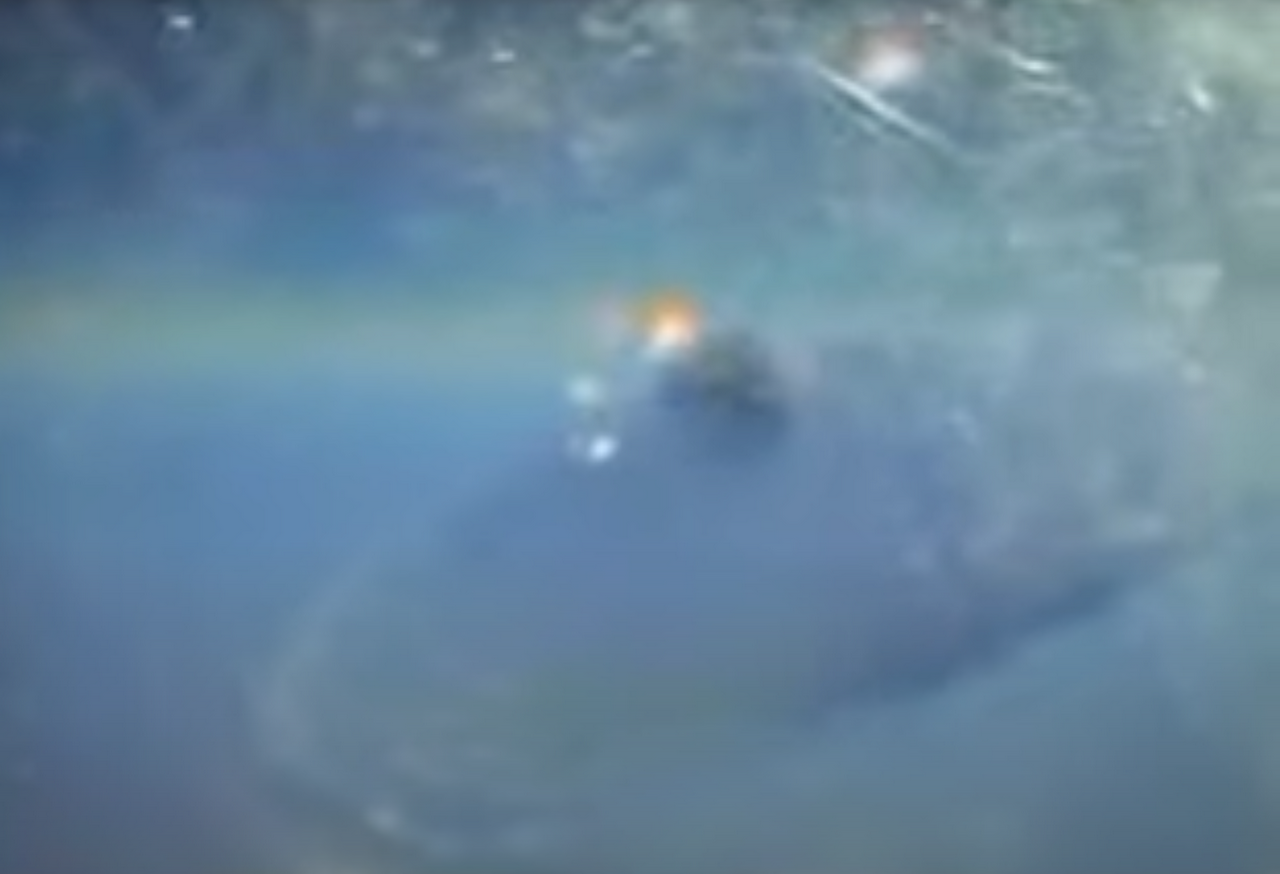
In May 2008, a short, 20 second low-resolution video surfaced on YouTube showing what appeared to be a disc-shaped object flying beside what is speculated to be a jet.
One of the earliest mentions of the “Flyby” footage seems to come from the UFO Chronicles website, where it appeared under the title “Flying Saucer UFO filmed from jet window.” The uploader, a user named Danny Lampkin, added only a short note: “not too sure about this one… you decide.”
Although, the actual earliest YouTube upload I could locate (though there may be older ones) comes from a user named frossani, who captioned it: “It’s a Blue Panorama flight from Rome to Paris on April 29, 2006.”
Interestingly, the version uploaded by frossani appears to be slightly higher in quality, suggesting that it may have been the original source for Danny Lampkin’s later post about two months afterward.
Watch the video:
At first glance, it looks like something from the early YouTube hoax era. The quality is awful, the reflections are odd, and the footage feels almost too dramatic to be real. Yet the deeper people have looked into it, the harder it has been to dismiss.
Below is a breakdown of what makes this case so persistent after more than fifteen years.
Original videos:
Uploaded March 5, 2008: frossani channel Uploaded May 14, 2008: Danny Lampkin channel
What’s in the Clip
The Flyby video runs just under twenty seconds. It is extremely low resolution, typical for uploads in 2008, and filled with heavy compression artifacts. There are visible reflections across the frame, which has led many to believe this is not the original footage but a recording of a screen playing the original. That would explain the odd glare and crushed image quality, although that remains a theory rather than confirmed fact.
The wing visible in the shot looks very similar to that of an NASA F/A-18 Hornet. The sweep angle and shape of the slats are nearly identical, and the wingtips appear to have empty missile rails, which is a signature feature of the Hornet. The camera’s placement, slightly above and behind the pilot matches the angle seen in official cockpit recordings from NASA and U.S. Navy F/A-18 Hornets. These aircraft often served as chase planes, equipped with fixed cameras mounted inside the canopy to document flight tests.
These visual clues place the setting squarely within the type of environment where such footage could plausibly have been taken. It looks more like a cockpit camera view from a fast-moving military jet than anything from a passenger aircraft.
Audio Clues
The clip features a steady ambient roar that sounds consistent with what you might hear from an aircraft, along with what seems to be faint background voices, possibly a woman speaking. The audio doesn’t cut or restart at the video splice points, which suggests it’s continuous background noise rather than an added overlay. Some viewers believe it could be genuine cockpit audio captured by an onboard microphone, while others suspect it was added afterward to make the footage feel more authentic.
Reddit user /u/VCAmaster conducted a detailed analysis of the audio and attempted to isolate the voices, though it’s still impossible to clearly make out what’s being said (if anything).
They put a great deal of effort into this, check out that post here.
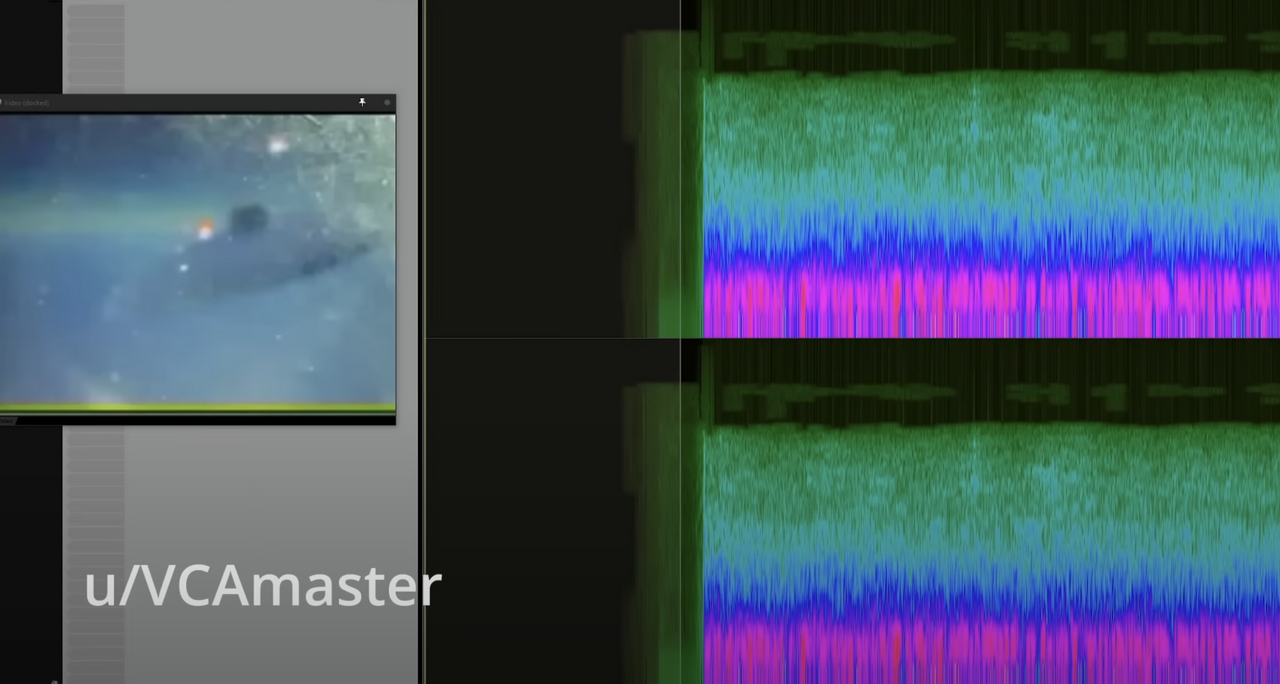
Either way, the mix of low-frequency rumble and muffled airflow sounds surprisingly close to the recordings made inside F/A-18 cockpits. Even if it isn’t original, it fits the environment well enough that it adds to the illusion.
Timeline and Provenance
The earliest known appearance of the Flyby footage was in April 2008, when it was posted on the Italian website segnidalcielo.it (website no longer live) although here is an early archive of the page.
Which describes the video being filmed by a filmed by a passenger on a Rome-Paris flight:
During the Rome-Paris flight, a passenger films a huge flying saucer through his window. It all happened on the Blue Panorama airline. Let's watch the video together and judge for yourselves.
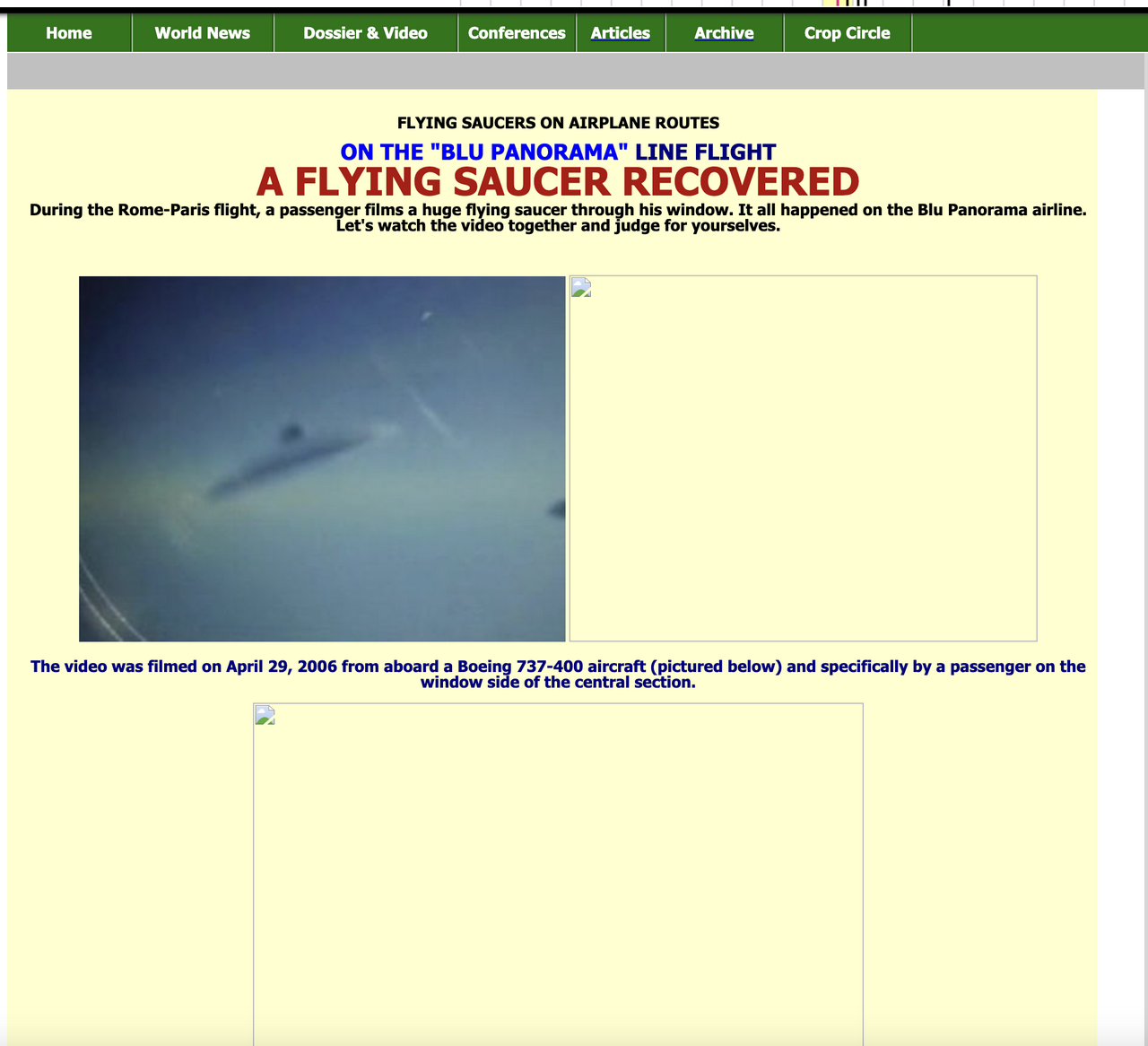
It states the video was filmed on April 29, 2006
The video was filmed on April 29, 2006 from aboard a Boeing 737-400 aircraft (pictured below) and specifically by a passenger on the window side of the central section.
The video embedded on that site links to the same YouTube upload from Frossani’s channel, so it’s likely that Frossani was still the original source of the video, and simply shared the video he’d uploaded there on this personal website.
However, a Reddit user claimed to have spoken directly with the original uploader, Frossani, and shared their exchange in a comment. According to that message, Frossani said he wasn’t the video’s creator — he copied it from a Zip drive belonging to a university friend whose father worked in Aviano, northern Italy, home to a major NATO air base. More on this below.
The Craft’s Design
The object itself has the classic “flying saucer” look: a domed top, flat underside, and a slightly tilted flight path. It resembles the well-known McMinnville photographs from 1950 and the craft described by Lt. Robert Jacobs in the 1960s “Vandenberg missile incident.”
McMinnville UFO:
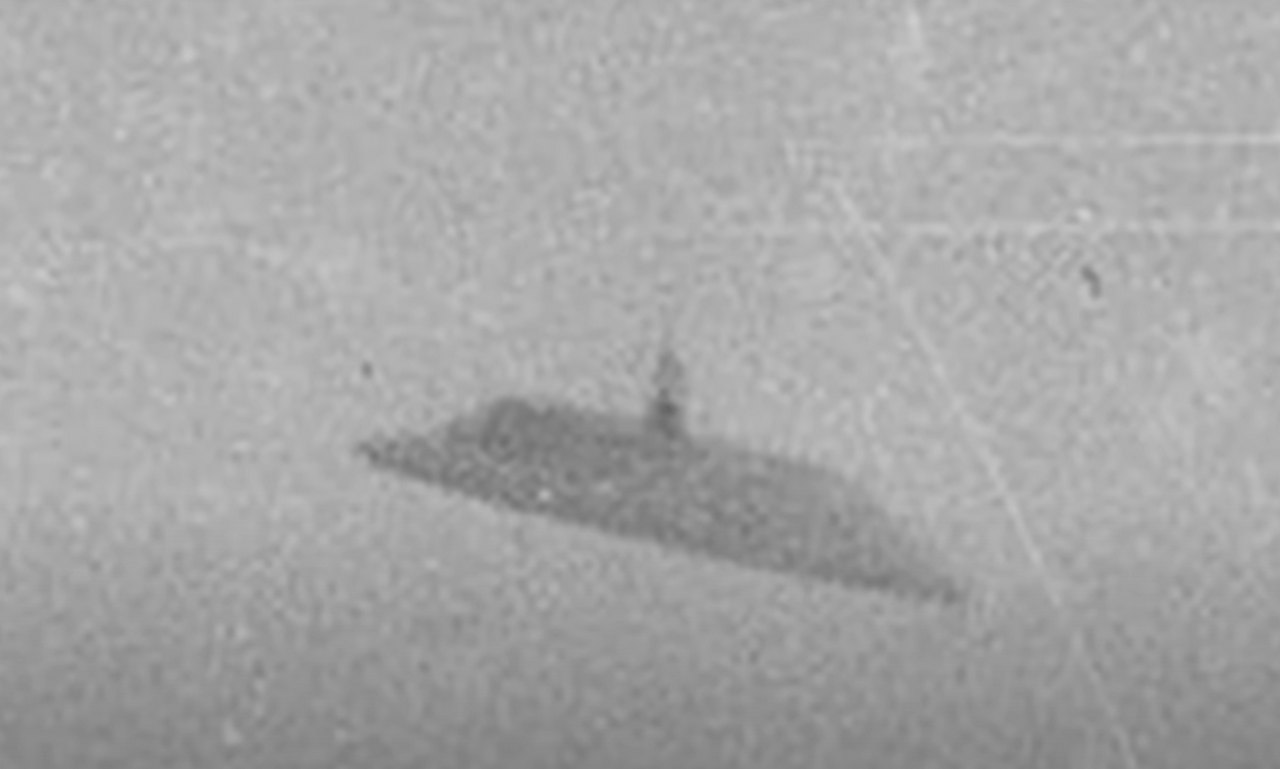
Those similarities could be coincidence, or deliberate design choices if the clip was created as a hoax. Even Bob Lazar’s old claim that saucers “fly belly-first” has been used by some to argue the motion looks authentic, though that connection is mostly anecdotal.
Flying saucer photo taken by police officer Mark Coltrane on patrol in Colfax, Wisconsin on April 19, 1978:
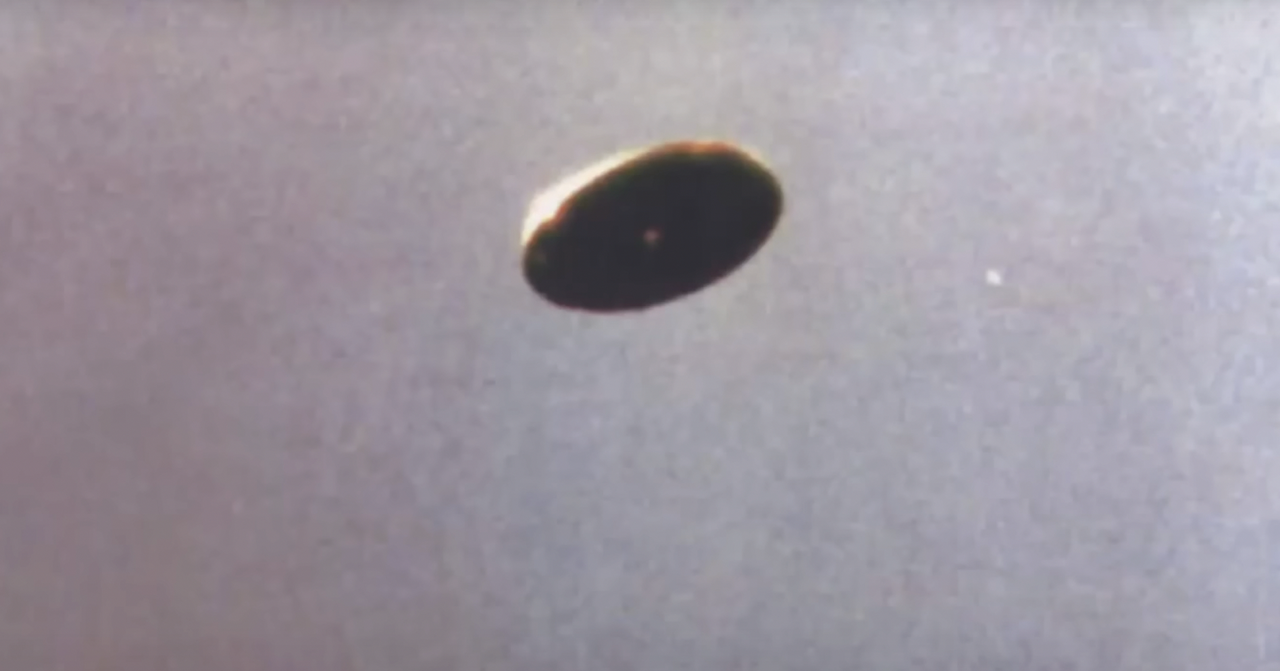
The Alleged Comms Log
A few years after the video first appeared, an alleged military communication log began circulating online, with the original source being the /x/ board on 4chan. It described a fighter jet encounter with an unidentified object that appeared only a few meters from the cockpit during a radar intercept. The language in the log used authentic-sounding NATO brevity codes and AWACS terminology, which added to its plausibility.
The event described sounds eerily similar to what is seen in the Flyby footage, but no one has been able to prove the document’s authenticity or connect it to the video. It might have been written by someone familiar with pilot procedures, or it could be a genuine transcript from a classified report. For now, it remains an unverified curiosity.
Alleged Comms Log (leaked on 4chan):
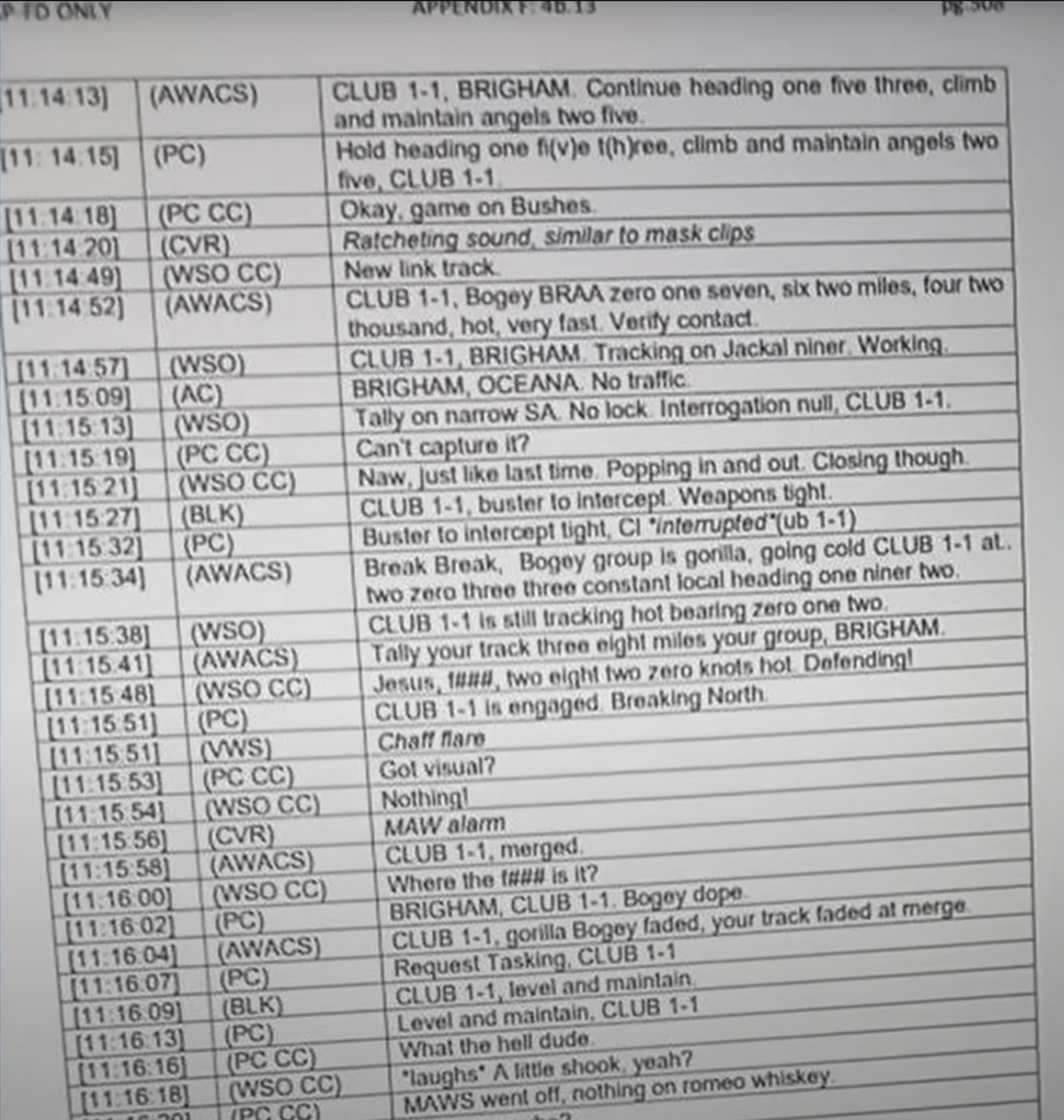
The “Behavioral Data” Appendix
Another page from that same supposed leak was labeled “Appendix F, Section 4B – DoD 1992–2017 High-Value Witness Interviews.” It claimed that over 1,200 UAP incidents had been analyzed by the Department of Defense, distinguishing between UAP (aerial) and UASP (aerial and submerged) cases.
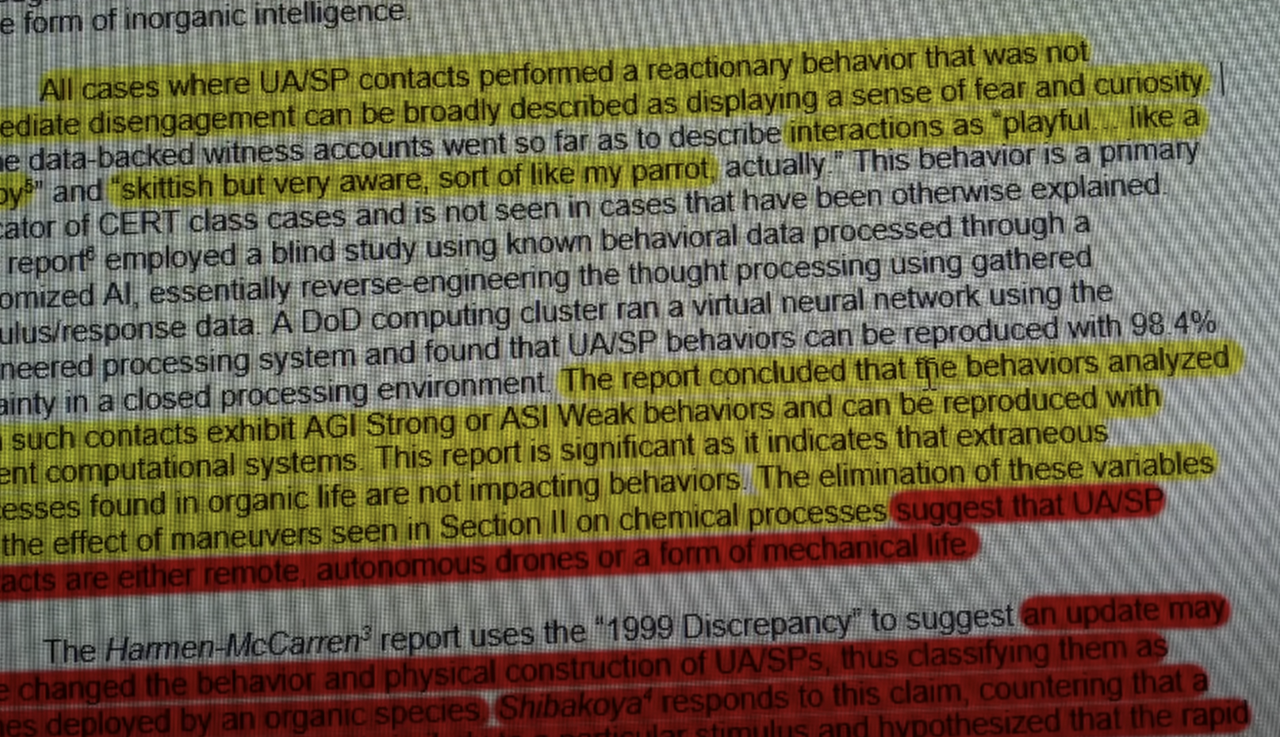
This document mentioned “mechanical life” and “organic species deploying autonomous drones,” which naturally caused a stir when it began circulating online. No government confirmation or credible source has ever verified it. Some have speculated that the Flyby incident could have been one of the “high-value witness” events referenced in that document, but this is only speculation.
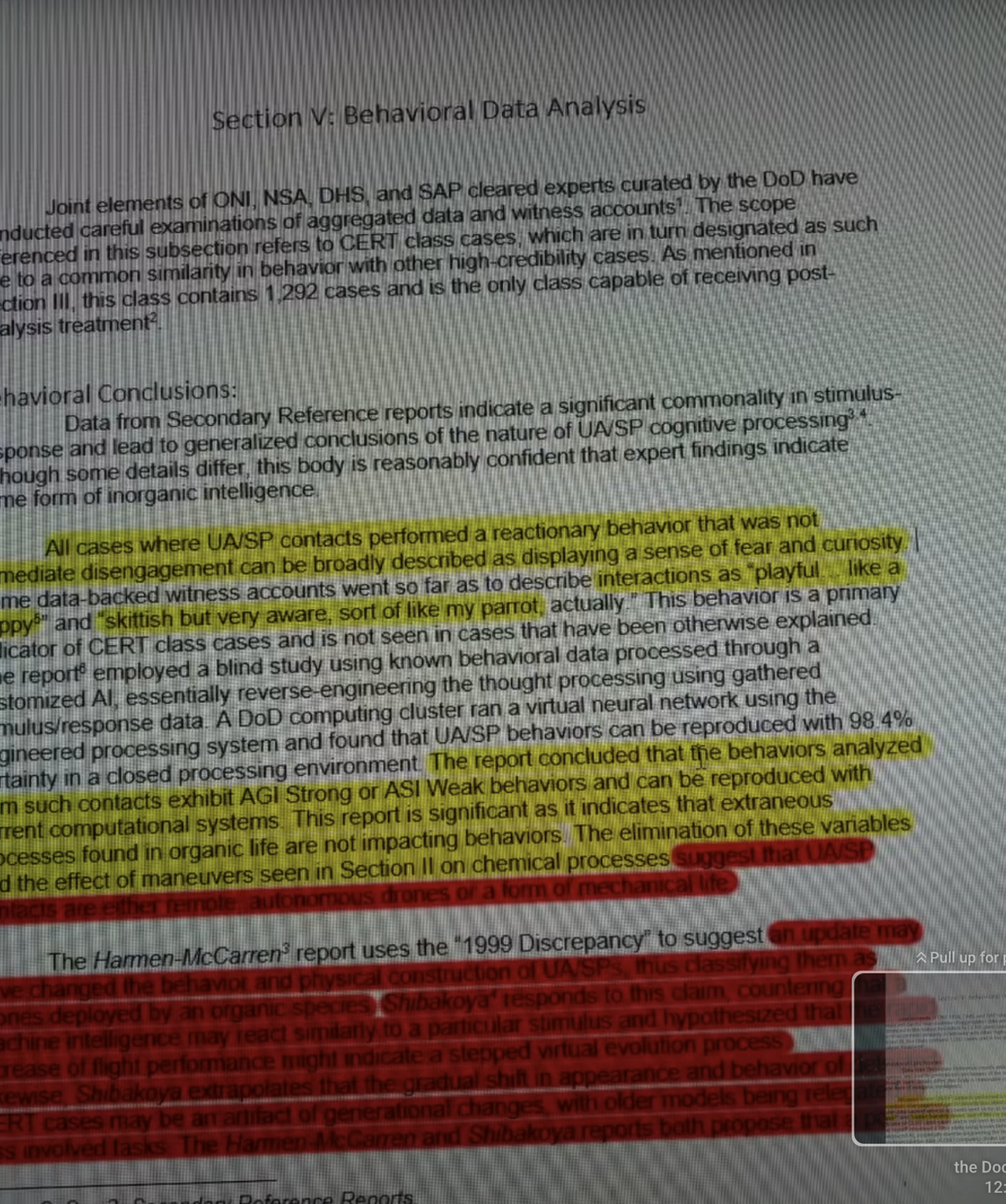
Why the Flyby Footage Could Be Real
The Aircraft Match
NASA Research F/A-18 Hornet (chase aircraft):
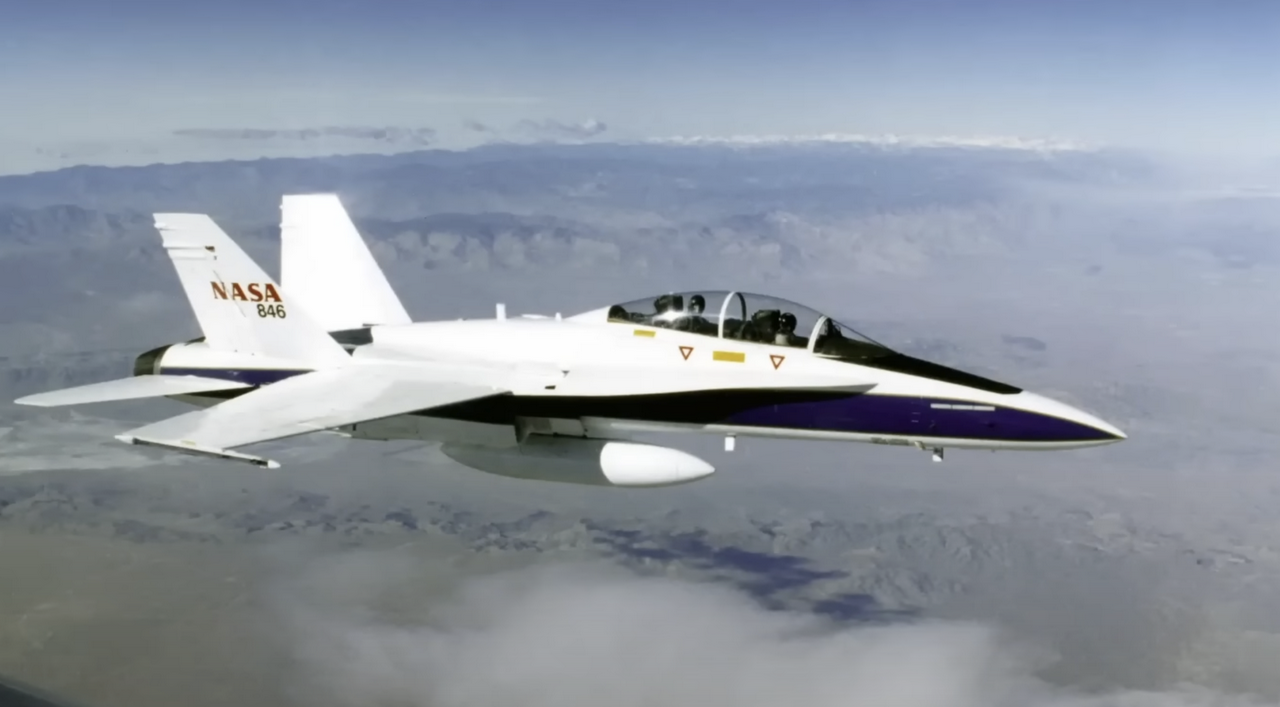
The wing seen in the Flyby clip looks almost exactly like that of an F/A-18 Hornet. The sweep of the leading edge, the shape of the slat, and even what appear to be empty missile rails on the wing tips.
Those rails are a giveaway since very few aircraft have them exposed in that way.
Screenshot from flyby video showing jetwing:
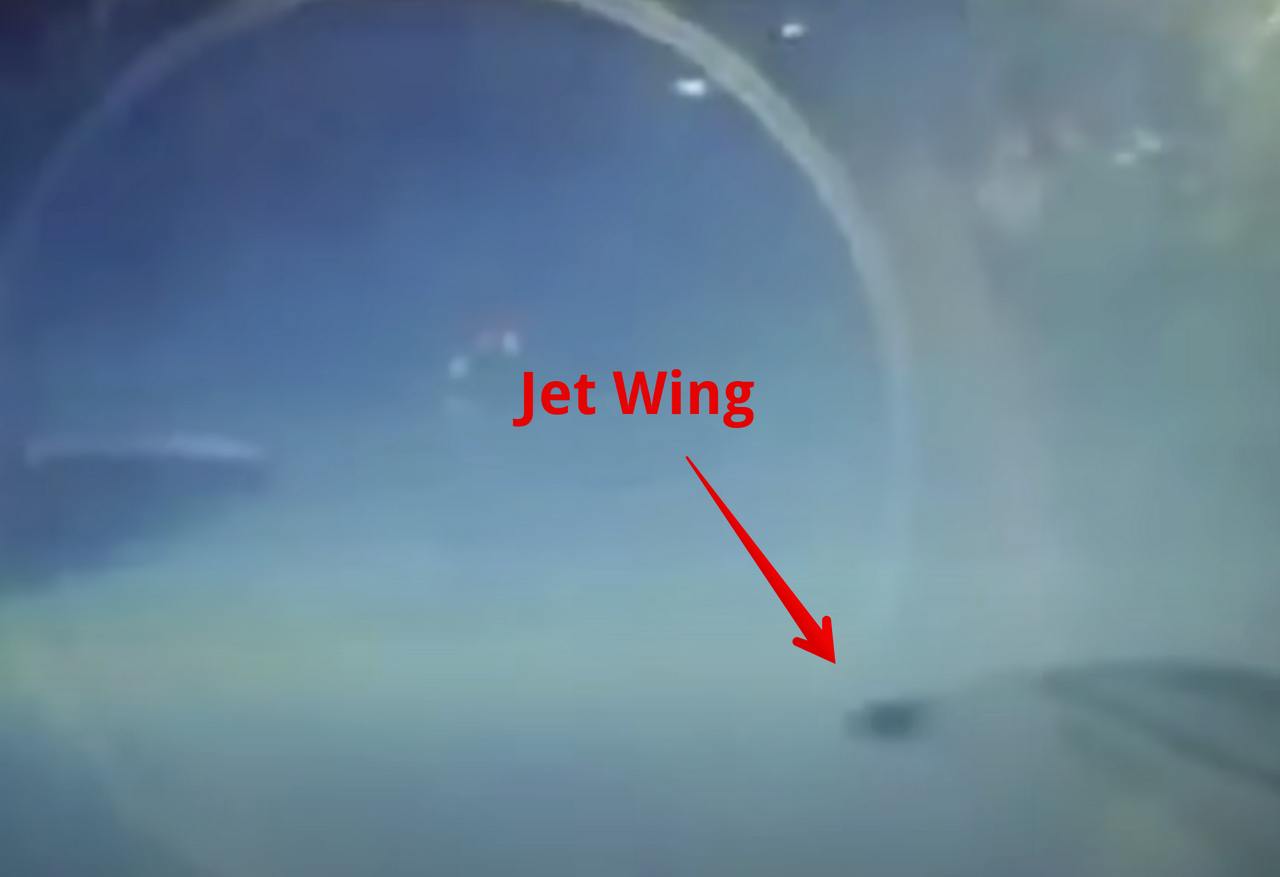
That alone narrows the possibilities. The perspective in the footage isn’t what you’d get from a passenger window or from the ground.
It looks like the view of someone sitting in a domed fighter jet cockpit, which makes the F/A-18 theory a strong fit.
Example of F/A-18 cockpit:
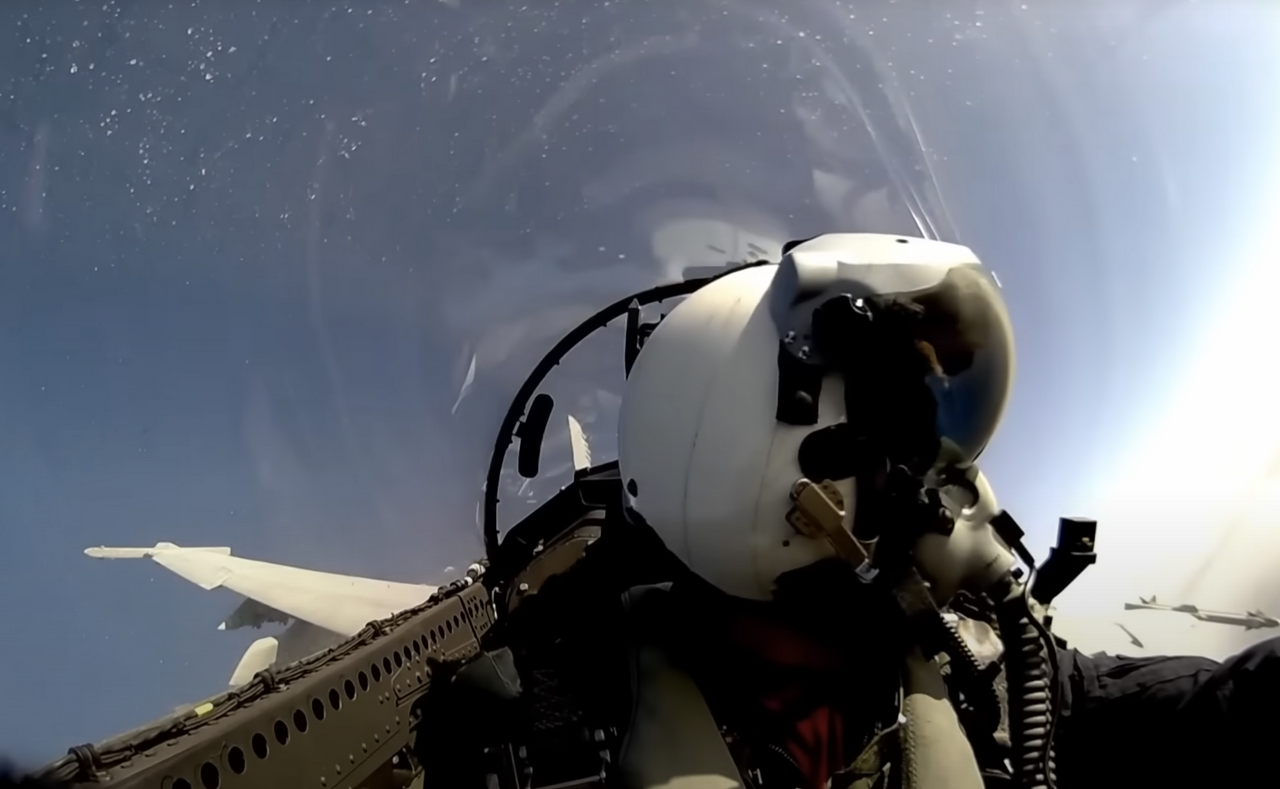
Fixed Cockpit Camera Setup
NASA’s chase F/A-18A fleet and some Navy training Hornets were fitted with fixed Sony camcorders mounted behind the pilot.
These cameras were used to record test flights and often captured the wing and the sky beyond it.
NASA’s chase F/A-18A fleet with fixed camera:
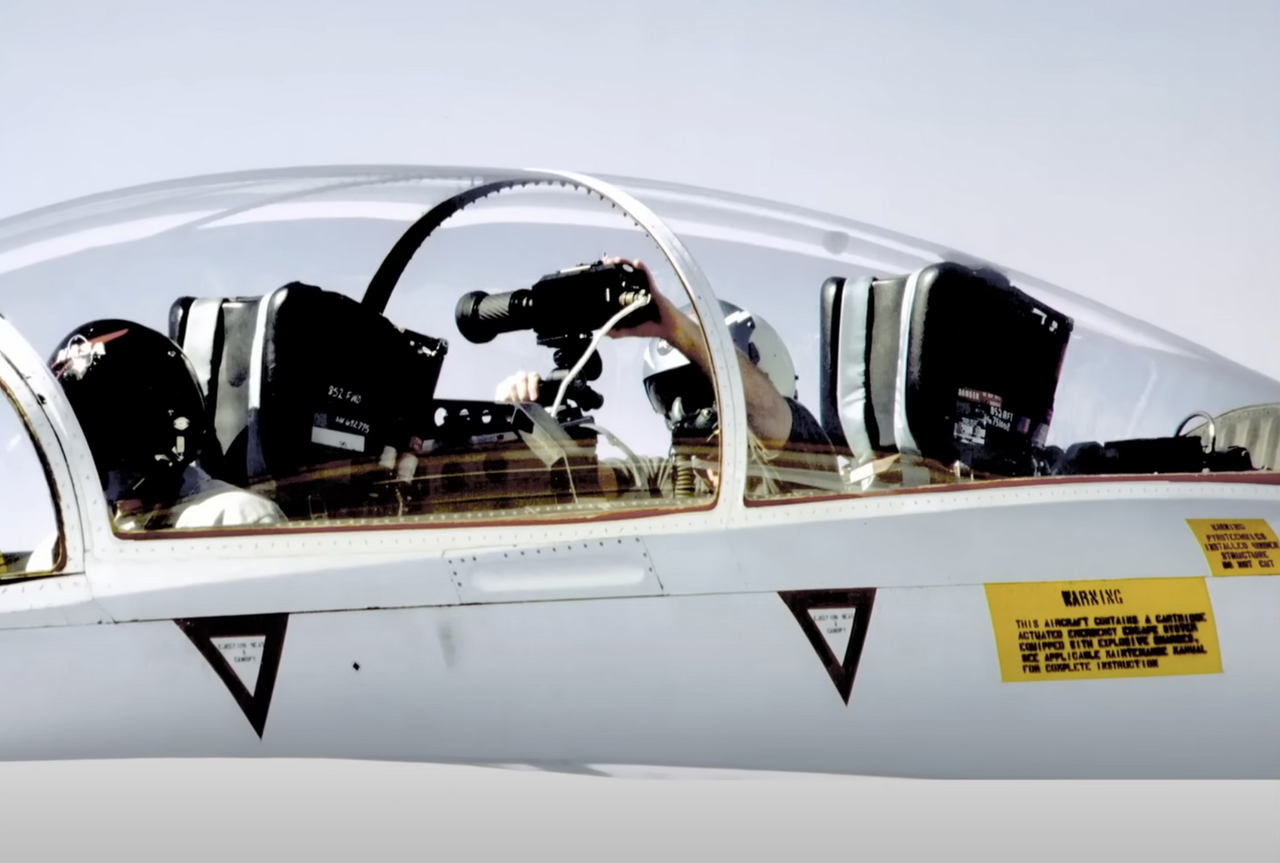
The Flyby video shows nearly the same angle and distance. The camera is steady, positioned slightly behind and above the pilot, and focused directly out over the wing. If you compare it to actual NASA chase-plane footage from the same time period, the framing and perspective are almost identical.
F/A-18A cockpit with fixed camera:
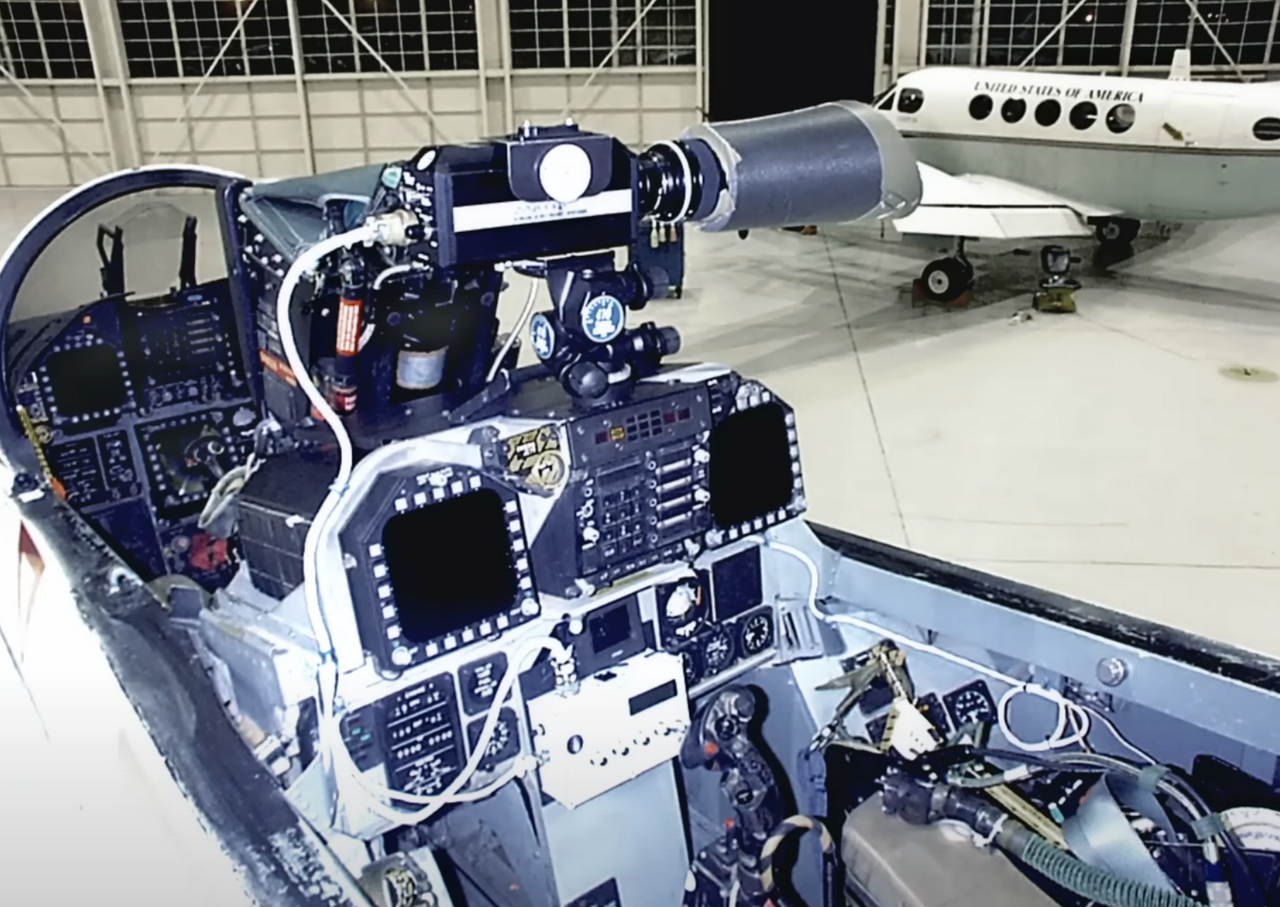
That’s not an angle most people would think to fake in 2008 unless they were familiar with how these cockpit setups actually looked.
It either happens to match by pure luck, or it was filmed from that kind of camera.
Reflections That Fit a Real Cockpit
Possible respirator reflection (MBU-23/P):
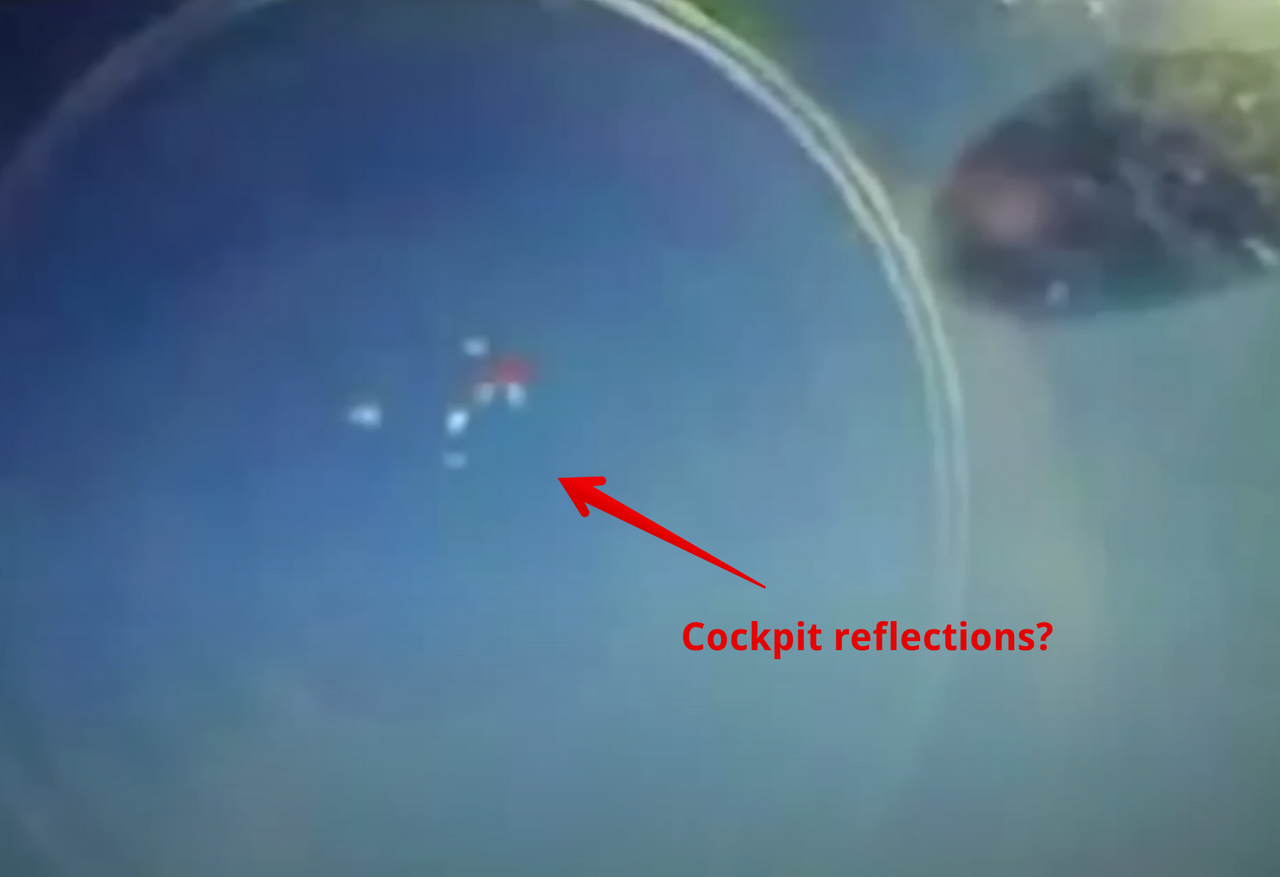
The reflections moving across the canopy glass look like what you’d expect inside a jet cockpit. You can see quick flashes that may be from the pilot’s helmet visor or the curved surface of an oxygen mask, possibly even a Gentex MBU-23/P respirator as seen below.
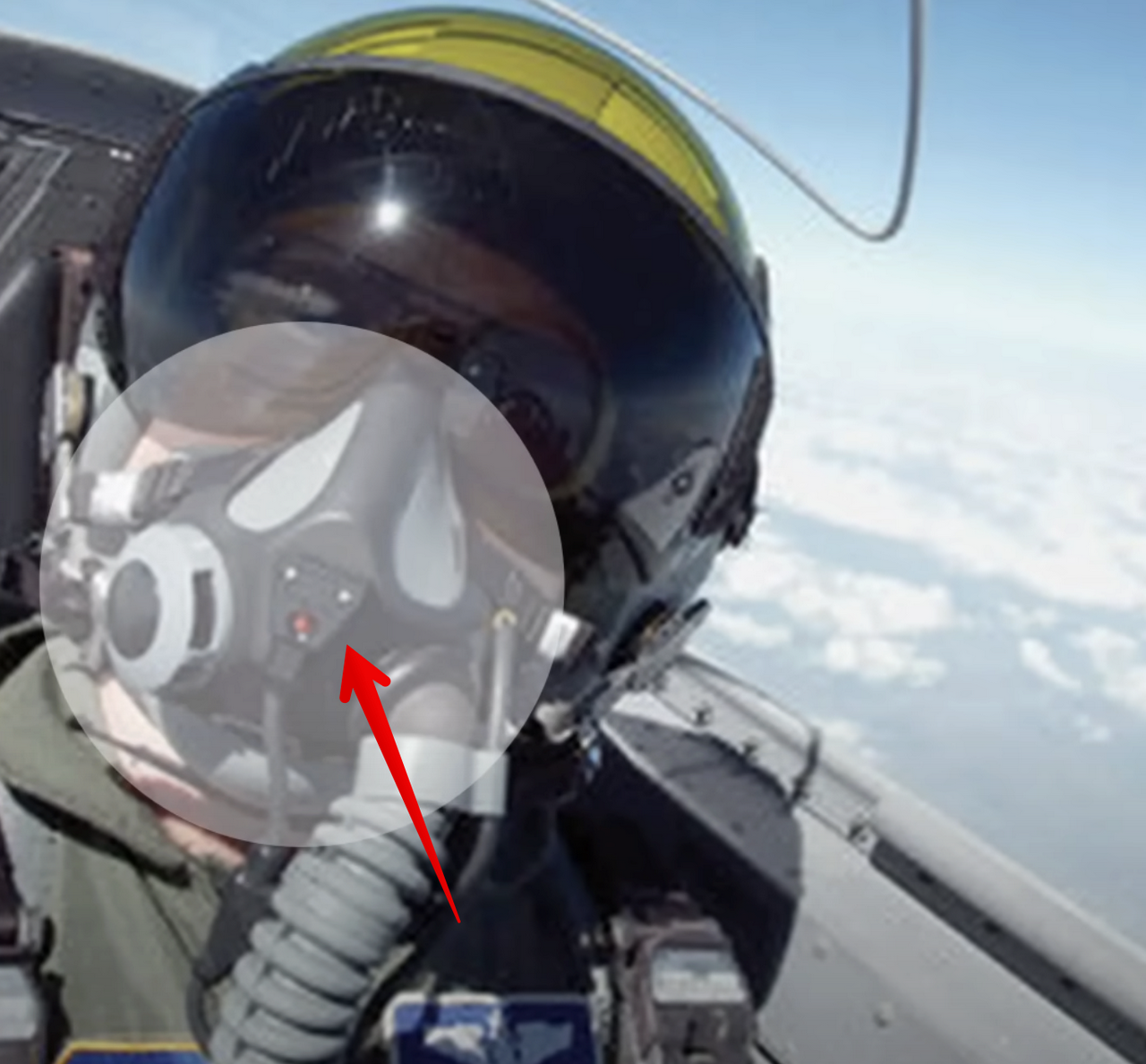
Details like that are tough to fake convincingly. Even if they’re not technically hard to reproduce, they’re unusually specific things to include for a simple hoax, especially in older footage. The subtle movement and layered reflections look natural, as if light is really bouncing off glass rather than being added in post. That kind of realism is difficult to achieve digitally.
The Sound Environment
The sound in the Flyby clip fits the part. There’s a low, steady rumble and muffled air pressure that match what’s heard in real cockpit recordings from F/A-18s. A few brief metallic hums can also be heard under the noise, similar to what onboard camcorders sometimes picked up from vibration inside the fuselage.
It doesn’t sound like a passenger plane, and it doesn’t sound like generic noise added later. Whether or not it’s the original track, it fits the acoustic profile of a real fighter jet recording.
Lighting Behavior
Near the end of the clip, when the object banks upward, it gradually darkens. That falloff looks consistent with natural sunlight fading across a curved surface. People who’ve enhanced the video frame by frame have pointed out that it darkens smoothly rather than abruptly, which isn’t how CGI from that era usually looked.
Even with the compression, the way the lighting changes across the object feels authentic. It reacts to the environment in a way that suggests a physical object was actually there.
Alternate Origin Theory: The Blue Panorama Flight
Another theory suggests the footage wasn’t filmed from a military jet at all, but from a commercial airliner. Some researchers have pointed the older upload of the same video that included a caption claiming it was shot aboard a Blue Panorama Airlines flight from Rome to Paris on April 29, 2006.
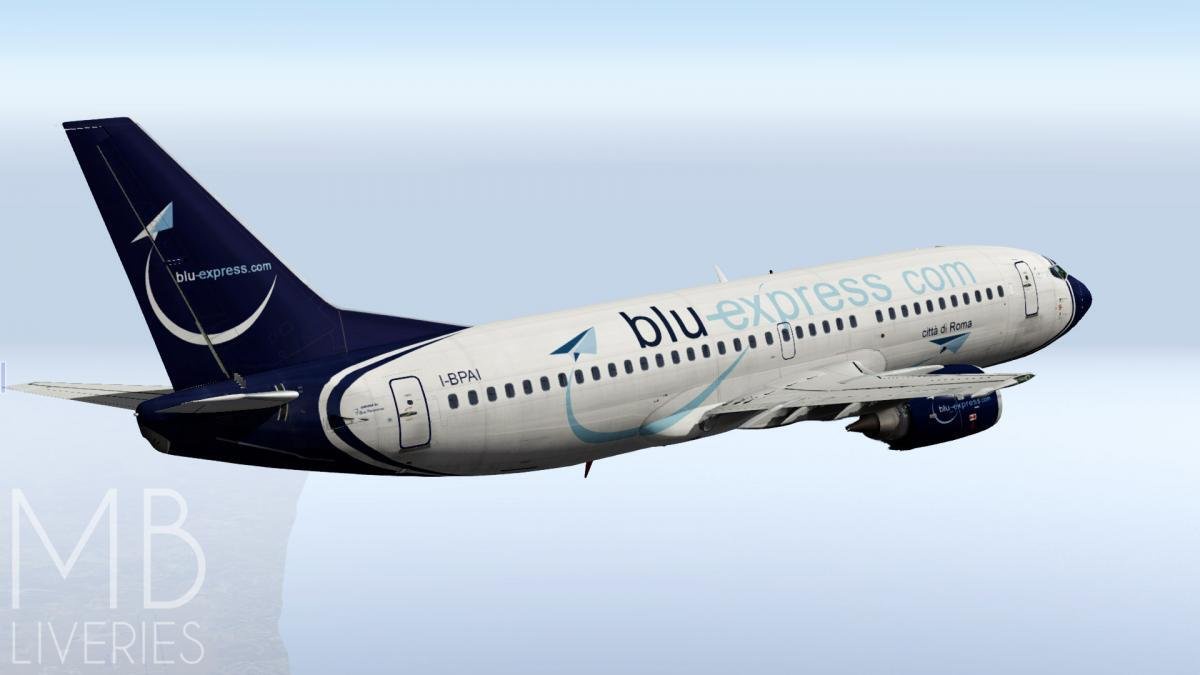
This upload predates the “Danny Lampkin” version and is the current earliest known source. The aircraft visible in the clip does resemble the wing and engine layout of a Boeing 737-300, specifically the Blue Panorama aircraft I-BPAG, which has led some to conclude the footage was taken from that plane. Side-by-side comparisons of the wing shape can be seen here and here, with the higher-resolution version of the video available on YouTube.
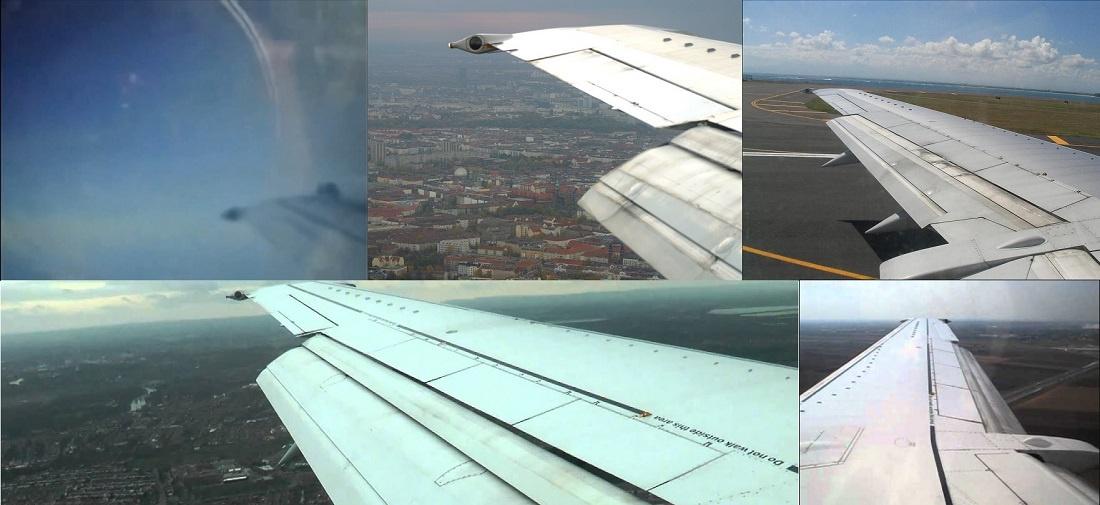
A detailed 3D recreation attempting to debunk the video can also be found here.
However, a Reddit user who says they spoke directly with the original uploader, Frossani, shared their exchange in this comment. According to that message, Frossani clarified that he wasn’t the creator of the video. He said he copied it from a Zip drive belonging to a university friend whose father worked in Aviano, northern Italy—home to a major NATO air base.
Dear xxxxx,
It was quite a surprise to discover all this hype and interest about a video I had almost forgotten. I am the owner of the YouTube Channel, but not the author of the footage. I had an interest in visual effects as a hobbyist and I used to collect some inspiring videos and fantasize on what techniques would allow to recreate them. The footage of your interest was copied from a Zip Drive belonging to a university friend of mine who knew about my hobby. We are not in touch any longer and I don't have further information about the origin of the video (I am not a UFO passionate, to me it was simply a probably-fake downloaded from the internet or some early-2000s CD-ROM). The only detail that could be useful for your research is that my friend's father's work was based in Aviano, in northern Italy. By the way, when I put the video on YouTube I didn't edit it in any way; the only intervention was on the description, in which I reported the details of a Blue Panorama flight from Rome tor Paris which had brought me to France some time before (it was then dismissed a few years later, to my great deception). I am sorry I'm probably not giving you relevant information for your research. In the last days I received different requests like yours; I decided to reply only to you because of your politeness and respectful attitude. (Also asks to not share name / contact info).
Best regards.
Most importantly, he explained that the only change he made before uploading was adding a note about a Blue Panorama flight he personally took around that time. That small edit seems to be the sole reason the “Boeing 737-300” detail became tied to the video later on. If his account is accurate, the flight reference wasn’t part of the original footage’s metadata or context—it was simply something he added, unintentionally creating a false trail.
Frossani described himself as a visual-effects hobbyist who collected and studied interesting clips. He said he believed the video was probably fake or came from an early-internet CD-ROM collection, though others familiar with his work claim his VFX skills at the time were too basic to have produced something that realistic.
I can’t personally verify which theory is correct—the F/A-18 explanation or the Blue Panorama one. Both have their own reasoning and contradictions, so I’m including them here simply to show the range of possibilities surrounding the Flyby footage.
If Frossani’s statement is true, the Blue Panorama connection might not indicate a real flight at all, but rather a coincidental personal reference that became misinterpreted—adding yet another layer of confusion to one of the most debated UFO clips online.
From there, the discussion returns to the technical and visual details that keep the Flyby footage so compelling.
Technical Plausibility
Everything in the clip behaves the way real video would. The exposure doesn’t flicker, the frame rate is steady, and the motion blur looks optical, not digital. There’s no telltale CGI clipping or artificial jitter.
That doesn’t mean it’s genuine, but it does mean it’s technically possible this was filmed exactly as it appears: a cockpit camera capturing something strange passing close by. For 2008, it would have taken a lot of effort to fake that level of realism using consumer software.
Why the Flyby Footage Could Be Fake
Although convincing at first, there are several reasons why the Flyby clip might be an early digital hoax rather than a real recording.
Intentional quality loss. The degraded look could have been deliberate. Re-filming a computer screen hides compositing seams, masks rough edges, and buries rendering artifacts under pixelation. Many early CGI UFO videos used that exact trick to look more “authentic.”
Lack of realistic movement. The object glides smoothly across the frame without any visible parallax or turbulence. If it were actually close to a jet moving at hundreds of knots, there should be some relative motion or shaking in its path. Instead, it looks locked to the camera, which often happens when a CGI element is tracked onto a scene.
Lighting inconsistencies. In some frames, the lighting on the disc appears too even. It doesn’t reflect the contrast or direction of the light hitting the clouds. That might be compression, or it could mean the object was digitally inserted.
Missing aerodynamic effects. If something was really flying that close to an F/A-18, there would likely be heat shimmer, vapor trails, or air disturbance between them. None appear.
Cinematic framing. The object enters the frame at the perfect distance, stays centered, then exits just as the clip ends. There’s no extra footage before or after. That kind of precision feels planned, more like a short CGI test designed to shock viewers.
No verifiable source. Every known copy traces back to low-resolution reuploads. The supposed Aviano connection remains just a rumor. With no metadata, pilot identification, or secondary footage, the case lacks the basic documentation you’d expect from an authentic military recording.
Taken together, these points suggest the Flyby video could have been intentionally crafted to look like cockpit footage, using the limitations of early YouTube video to hide flaws. It might have been one of the more sophisticated UFO hoaxes of its time.
Where It Stands
The Flyby video occupies a strange middle ground between old UFO lore and modern UAP discussion.
What’s known: it was uploaded in 2008, appears to show a cockpit perspective, and contains reflections that fit a real aircraft environment. What’s unknown: who filmed it, when it was shot, and whether it ever existed in an original higher-quality format.
Until a verifiable source file appears or new metadata is uncovered, the Flyby footage will remain what it has always been: one of the most intriguing and persistent mysteries from the early YouTube UFO era.
Sources and Further Reading
- YouTube analysis: Incredible UFO Footage – FLYBY (UAP Gerb)
- Early mirror: “UFO filmed from Airplane window” – Danny Lampkin
- Reddit discussions: Story behind the video, A look into the Flyby UFO footage, Enhanced version discussion
- F/A-18 cockpit footage examples: USMC F/A-18, NASA chase F/A-18
Check my other posts
Was Flight MH370 Teleported?
My detailed analysis of the plane and orb teleportation videos that some people have linked to the disappearance of MH370.
Why Is Skinny Bob Still Blinking at Us?
A look at the “Skinny Bob” alien footage, where I break down why it’s so strangely convincing, what’s likely fabricated, and why the videos still spark debates years later.
Did a 2024 Forgotten Languages Post Foreshadow The Nordic Drone Crisis?
A breakdown of a cryptic Forgotten Languages post about a supposed drone strike simulation off New Jersey, and how its details later echoed the real drone shutdowns across Denmark, Norway, and Germany. I compare the timeline, the political backdrop, and the odd overlap between fiction, leaks, and NATO airspace incidents.
Carlos Díaz: The UFO with the Glowing Molten Skin
A detailed look at the Carlos Díaz “Ships of Light” UFO: the molten amber craft he photographed over Ajusco, how it seemed half-machine, half-alive, and why the visuals still rank among the most striking UFO images ever captured, hoax or not.
Best UFO Photos of All Time
A collection of some of the best and most famous UFO photos ever taken. Looking at who took them, how they’ve been debunked or defended, and why a handful of images still sit in that annoying space between “obvious hoax” and “if this is real, everything changes.”
Follow me on X for more updates.